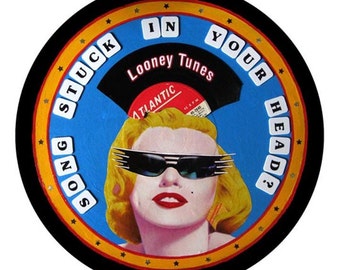Your task: Develop a tour package that includes travel to and from Africa from San Francisco, visits and activities at 4 different historical sites in sub-Saharan Africa. Include travel plans and costs (airfare from SFO to first site, travel to and from each site, and hotel costs), as well as an itinerary for your tour. A maximum cost for the trip is $8000.
Select your four destinations from the following list:
- The Great Zimbabwe, an iron age city, now in ruins. The area was once the heart of a large trading empire from the 11th to the 15th century. The city once held nearly 20,000 people.
- The rock-hewn churches of Lilibela. These Ethiopian churches were carved into the sides of rocky cliffs during the 12th and 13th centuries.
- The city of Timbuktu and it's famous mosques. Visit the current and former capital of Mali where Mansa Musa once ruled.
- The two story Somba houses of Koutammakou. These unusual structures found northern Togo use the first floor as barns and the second as living quarters.
- The mud mosque of Djenne. See the worlds largest mosque constructed entire of mud.
- James Island in the Gambia River. Now called Kunteh Kinteh Island, inspired by the television show Roots, this fort was once a major center of trade for gold, ivory and slaves.
- Traditional Asante building in Ghana. These 13 structures are the last remaining buildings from the once great Asante Empire.
- The tomb of Askia Muhammad in Gao. This mud tomb is said to be constructed of earth Askai brought back from Mekkah after his haj. Askia once ruled the Songhai Empire.
- Goree island in Dakar, Senegal. A place with a dark history. Once a center of the slave trade, the fort on Goree Island was the place where thousands of Africans were kept by slave traders before being taken to America.
- The Ksours of Mauritania. These Arabic castles were once major cultural and religious centers along the trans-Sahara trade routes.
- Fort Jesus in Kenya. This Portuguese fort in Mombassa was built in 1593 to protect European traders and explorers. It's now one of the most visited cites in Kenya.
- The ghost town of Kolmanskop in Namibia. The town was a center of diamond mining for 40 years before it was completely abandoned.
- The prison at Robben Island in South Africa. A place with a dark past. This is where Nelson Mandela among many other anti-apartheid activist were held before South Africa became free.
- The Beit al-Ajaib, the house of wonders in Zanzibar built for Sultan Barghash in 1883.
- The Karen Blixen Museum in Kenya. Once the home of Danish author Karen Blixen, her house and coffee plantation are now a popular museum.
- Lamu Old Town in Kenya. This is the oldest, and best preserved Swahili settlement. The town is on an island without vehicles. Goods and people there are still moved by donkey.
- Le Morne Brabant on the island of Mauritius. This island, now covered with resorts, was once famous as a hide-out for runaway slaves who lived for decades in the islands system of caves.
- Ulundi, the Zulu capital city. Now in the KawZululand region of South Africa, this city was the capital of the Zulu empire and the site of the Zulu army's final battle in the Boer Wars.
- The Stone town of Zanzibar. This town on the island of Zanzibar was once part of the Swahili trading empire. Now the island is a famous resort destination.
- Kilwa Kisiwant. Part of the Omani/Swahili trade empire founding in the 11th century. This now ruined city was once the heart of a great empire.
- Dogan Villages of Mali. A unique, ancient culture still found in West Africa where people live in towns built into the sides of cliffs
- Kimberly Diamond Mine - South Africa. This, the largest diamond mine in the world, is visible from space.
- Monrovia, Liberia - This West African city was founded by freed American slaves in the 1830's.
- Kingdom of Dahomey. This West African kingdom, located in modern day Benin, was once famous for its women warriors.
If there is another historical site in Sub-Saharan Africa you would like to do, please discuss it with your teacher.
Each group member will be responsible for researching one location in Africa, preparing artifacts based on the group's research and participating in the presentation.
Artifacts:
Presentations..
Your group will give a sales presentation to a local club, like the Rotary Club. Members of this club are interested in travel and in history. Your presentation should tell the Rotary Club the details of your trip including the cost. It should also describe the history of the places you have selected and why they would be an interesting place to visit. The Rotary Club members do not like listening to a bunch of presentations about the same place, so be sure to pay attention to what the other groups are talking about. You want to say something different from everyone else.
They would like your group to talk for six to eight minutes total.
Schedule
Tues. Nov. 14. Introduction: Trip to anywhere in the world.
Thurs. Nov. 16. Research sites you want to visit.
Mon. Nov. 27. Continue research and notes on sites.
Wed. Nov. 29. Continue research/work on products
Fri. Dec. 1. Complete research/work on products
Tues. Dec. 5. Turn in itinerary with cost. Start work on artifact
Thurs. Dec. 7. Work on artifacts/presentations
Mon. Dec. 11. Work on artifacts/presentations
Wed. Dec. 13. Presentation run-through. Work on artifacts/presentations
Fri. Dec. 15. Artifacts due by end of day. I mean it!!! Work on presentations
Tues. Dec. 19. Presentation day.
Grading
Each group will get one grade for their presentation including the visuals used, the quality of the information presented and the quality of the groups performance/cooperation.
Each individual member will get an individual grade based on the quality of the artifact.
Each individual member will get a collaboration grade based on how well they work as a group member and how well they meet the assigned deadlines. There may be regular checks of how much work your group has done each day as part of your grade.
Each of these will be one third of your grade for this project.
Each group member will be responsible for researching one location in Africa, preparing artifacts based on the group's research and participating in the presentation.
Artifacts:
- Each group must make a brochure advertising their tour. This should include historical information for each destination, pictures, itinerary information and a price.
- Each group must make a keepsake map of Africa showing the destinations on their tour. These should include pictures of each destination and historical information about each.
- Each group must make two additional souvenirs. These should be things people going on the tour will want to keep. They should be visually appealing and contain historical information.
Presentations..
Your group will give a sales presentation to a local club, like the Rotary Club. Members of this club are interested in travel and in history. Your presentation should tell the Rotary Club the details of your trip including the cost. It should also describe the history of the places you have selected and why they would be an interesting place to visit. The Rotary Club members do not like listening to a bunch of presentations about the same place, so be sure to pay attention to what the other groups are talking about. You want to say something different from everyone else.
They would like your group to talk for six to eight minutes total.
Schedule
Tues. Nov. 14. Introduction: Trip to anywhere in the world.
Thurs. Nov. 16. Research sites you want to visit.
Mon. Nov. 27. Continue research and notes on sites.
Wed. Nov. 29. Continue research/work on products
Fri. Dec. 1. Complete research/work on products
Tues. Dec. 5. Turn in itinerary with cost. Start work on artifact
Thurs. Dec. 7. Work on artifacts/presentations
Mon. Dec. 11. Work on artifacts/presentations
Wed. Dec. 13. Presentation run-through. Work on artifacts/presentations
Fri. Dec. 15. Artifacts due by end of day. I mean it!!! Work on presentations
Tues. Dec. 19. Presentation day.
Grading
Each group will get one grade for their presentation including the visuals used, the quality of the information presented and the quality of the groups performance/cooperation.
Each individual member will get an individual grade based on the quality of the artifact.
Each individual member will get a collaboration grade based on how well they work as a group member and how well they meet the assigned deadlines. There may be regular checks of how much work your group has done each day as part of your grade.
Each of these will be one third of your grade for this project.


























